Where To Buy Amazon Return Pallets Online
Selling on Amazon remains extremely competitive, despite significantly lower entry hurdles in recent years. However, devoted independent traders may still find success online.
All Amazon sellers, large and small, have substantial potential to enter the market, provided they develop a solid selling strategy. Buying and selling Amazon return pallets is a great way to make money.
This comprehensive essay will lead you through the process of collecting Amazon return pallets, placing you in a good position to capitalize on this unique and underutilized method.

Table of Contents
What are Amazon Return Pallets?
Amazon shoppers have 90 days to return an item for any reason. It typically does not make sense for sellers to pay Amazon to transport products back, so they are liquidated instead. Amazon frequently unloads pallets of returns to secondary marketplaces and auctions them off.
Why Would You Want Amazon Return Pallets?
You are obtaining a pallet load of retail items at a significantly reduced price. The more you buy, the lower the price per item. The idea is to resell such things at a regular retail price, with a significant profit over what you paid.
What is the Process?
- Amazon will sell these pallets through an auction.
- You bid on the auction and win.
- Pay for the pallet and put in any additional information necessary to complete the purchase.
- Pallet gets shipped to you.
Then you break-down the pallet and sell whatever you can:
- Flip items in good condition.
- Refurbish broken items.
- Items that can’t be fixed, you can sell the parts.
- Undamaged original packaging and boxes can sometimes be sold on eBay.
What Do You Need to Buy an Amazon Pallet?
- You must have an account set up and be approved to bid on the auction site.
- Must have a valid reseller certificate. You will need this to avoid paying sales tax on the pallet and you will most likely need one to resell your items.
- If you win the bid, you will provide extra information to complete the order, make payment, and finalize shipping.
What Does Amazon Do With Its Returns?
What Amazon does with returns is up to the sellers (whether 1p or 3p). Some are repackaged and marketed as new or used through “Amazon Warehouse Deal” or “Amazon Renewed,” while others are returned to the seller, donated, or liquidated using Amazon return pallets.
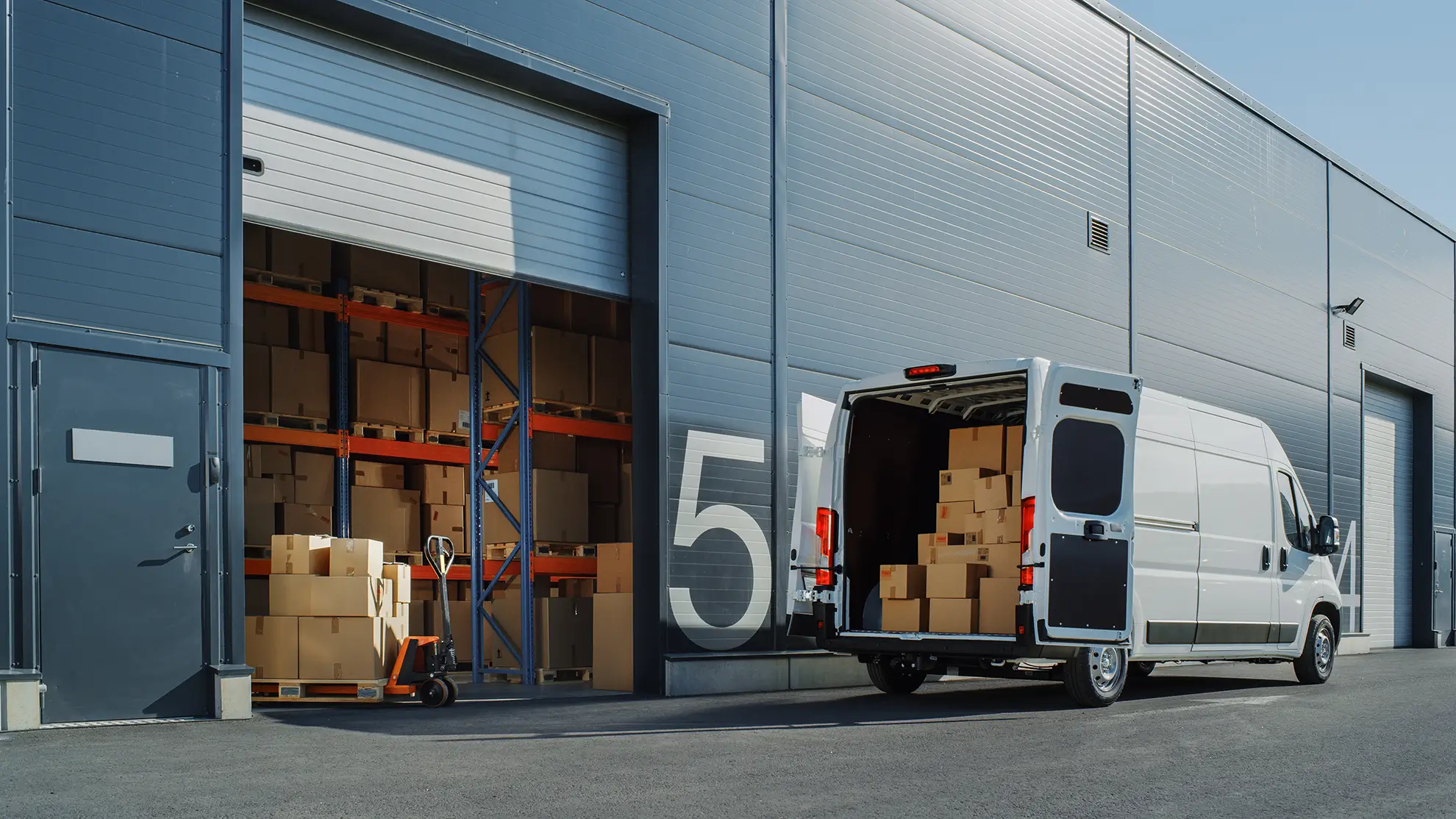
Can You Buy Amazon Returns?
Yes, you can purchase Amazon return pallets from third-party liquidators through the Amazon Liquidation program. These third-party liquidation websites collaborate with liquidators, who purchase huge quantities of returned merchandise from Amazon and other merchants before reselling them to businesses or individuals.
What Are Amazon Return Pallets?
Amazon return pallets are crates that contain products returned to Amazon by customers for a variety of reasons, including damaged packaging, buyer’s remorse, and product flaws. These pallets usually contain a variety of things from several product categories, such as electronics, apparel, toys, home items, and so on.
When buyers return things to Amazon, the seller frequently inspects them to evaluate their condition. If the items are still sellable, they can repackage them and resell them at a discount through “Amazon Warehouse Deals.”.
However, small flaws or damage in some returned items may prevent their resale as new. Sometimes, liquidation companies or wholesalers that specialize in buying these types of merchandise stack these returned items together on pallets.
These companies then offer the pallets to individuals who want to acquire large quantities of things at a discounted price.
Purchasing Amazon return pallets can be a cost-effective way for businesses to acquire inventory; however, there are risks involved, as the condition of the items can vary greatly, and there may be a higher rate of defective or unsellable products than purchasing new merchandise directly from manufacturers or distributors.
What Kind of Items Are Included in Amazon Return Pallets?
Amazon return pallets can include a wide range of products from almost every category it offers. Items commonly found in Amazon return pallets include electronics (smartphones, tablets, laptops, etc.), clothing (shirts, shoes, jackets, etc.), home and kitchen appliances (coffee makers, blenders, toasters, etc.), health and beauty products (skincare items, cosmetics, haircare, etc.), and many others.
It is crucial to note that the particular contents of Amazon return pallets can vary substantially based on factors such as the origin of the returns, the condition of the items, and the policies of the liquidation firm or wholesaler selling the pallets. As a result, before purchasing a pallet, it is best to conduct a thorough study and comprehend its contents.
What Can You Expect From an Amazon Pallet Sale?
When purchasing Amazon return pallets, there are several factors to consider. You may receive products in a variety of situations, including brand new, worn, damaged, or missing parts
Receiving a big number of defective or unsellable things is one of the most important hazards when purchasing return pallets, but if you can refurbish or sale the items on other marketplaces (such as Facebook) while explicitly indicating what’s wrong with them, you can still come out on top.
You’ll also receive a diverse range of products, some of which may be more suitable for reselling than others. In terms of benefits, you’ll be able to purchase a big number of things at greatly reduced pricing, allowing you to price competitively while preserving a healthy profit margin.
Purchasing Amazon return pallets can be a realistic alternative for obtaining products at a reduced cost, but it is critical to undertake extensive research, consider the dangers, and understand the terms and circumstances before making a purchase.
How Much Do Amazon Return Pallets Typically Cost?
Amazon return pallets often cost between $100 to $10,000, depending on the items included. Household products will cost less, but gadgets will typically cost more. Each pallet’s cost can also vary depending on weight, size, product categories, manifest data, and auction competitiveness.
Are Amazon return pallets worth it? (Pros & Cons)
Below are some lists of the primary pros and cons you will experience when buying and selling Amazon return pallets:
Pros:
- You can acquire these products at a significantly discounted price, which increases profitability
- You’ll receive a wide variety of products which will allow you to run product tests to see which ones you may want to consider selling long-term
- You can lean into the environmental/sustainability benefits of selling returned items to help reduce waste and the overall environmental impact
- You may be able to find some hidden gems that you never would have considered selling previously
Cons:
- These return pallets contain a mix of items in various conditions, making it time-consuming and challenging to sort the wheat from the chaff
- Having to manage a long list of ASINs and product listings with low levels of inventory is not very scalable
- The products likely won’t have warranties
- You may receive products that are highly competitive to resell
- The amount of time and effort required to manage this style of business is much greater compared to FBA
Overall, while purchasing Amazon return pallets can result in cost savings and potential profits, it is critical to balance the pros and downsides carefully and undertake extensive research before making a purchase. Understanding the risks and obstacles involved can help purchasers make more informed decisions and increase their chances of success.
How to Buy Amazon Return Pallets
Rather than purchasing Amazon return pallets directly from the source, resellers can buy them from huge liquidation companies that specialize in overstocked and returned commodities. Five of the top sites for resellers to look out for are:
BULQ
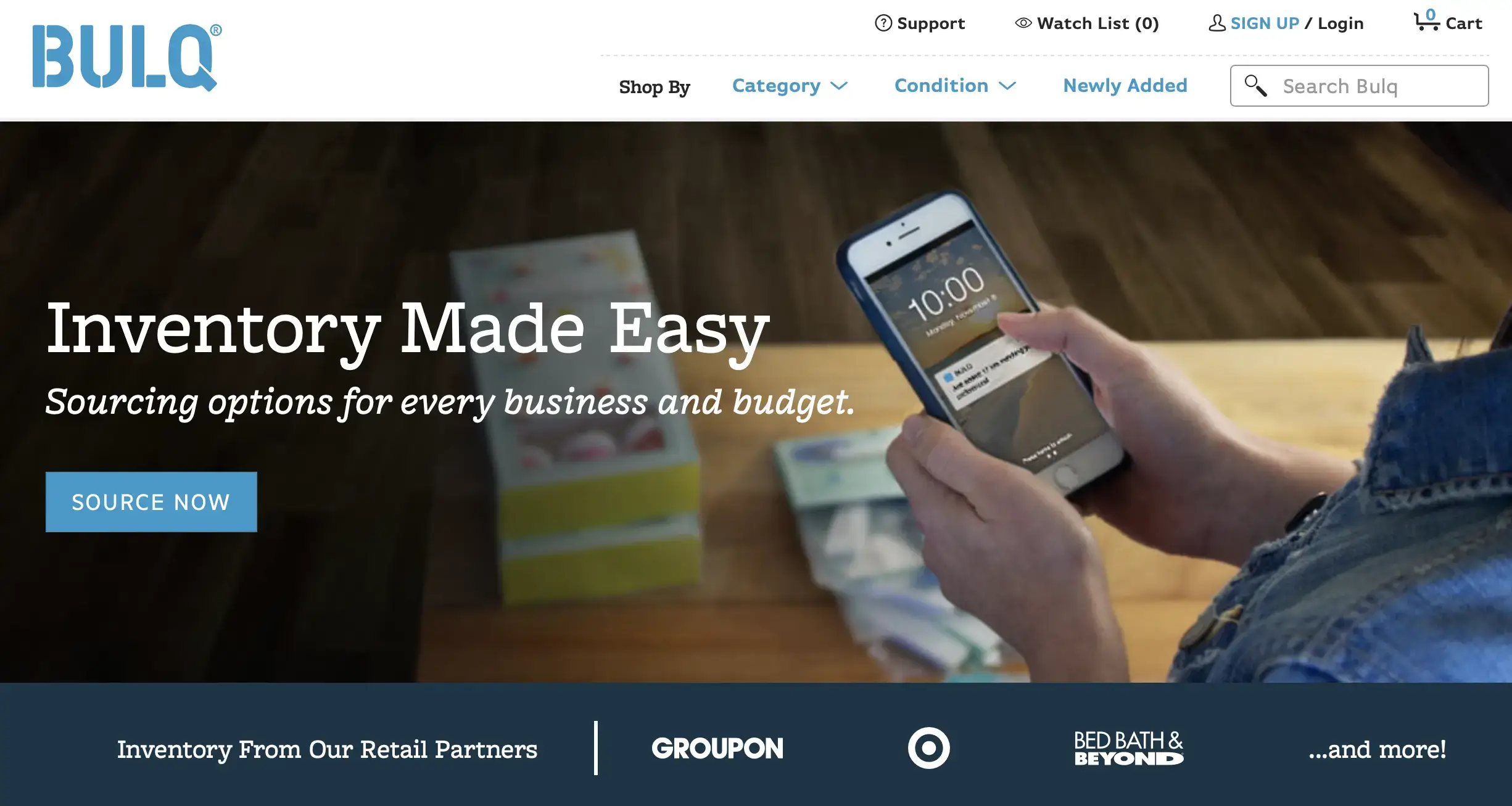
This site, which has one of the greatest collections of Amazon return pallets accessible, allows resellers to acquire pallets ranging from $100 to $10,000, depending on the contents.
While they are simple to use, prompt, and often receive fresh pallets, the combination of high shipping charges and occasionally erroneous manifest details may put customers off.
Pros:
BULQ provides a diverse selection of products from big-box shops in areas such as clothes, home and garden, toys and babies, electronics, and more. A new product arrives three times per day, providing sellers with constant opportunity.
Bulq.com is an Amazon liquidation site that caters primarily to resellers, providing bulk purchase choices, discounted pricing, and access to a reseller community.
Cons:
As with any liquidation marketplace, there is a risk of purchasing damaged or faulty products that are unfit for resale.
While manifest information is provided, customers may have limited options for customizing or selecting individual items from a pallet.
Buyers must pay for shipping and handling expenses, which vary depending on location and pallet size.
Direct Liquidation
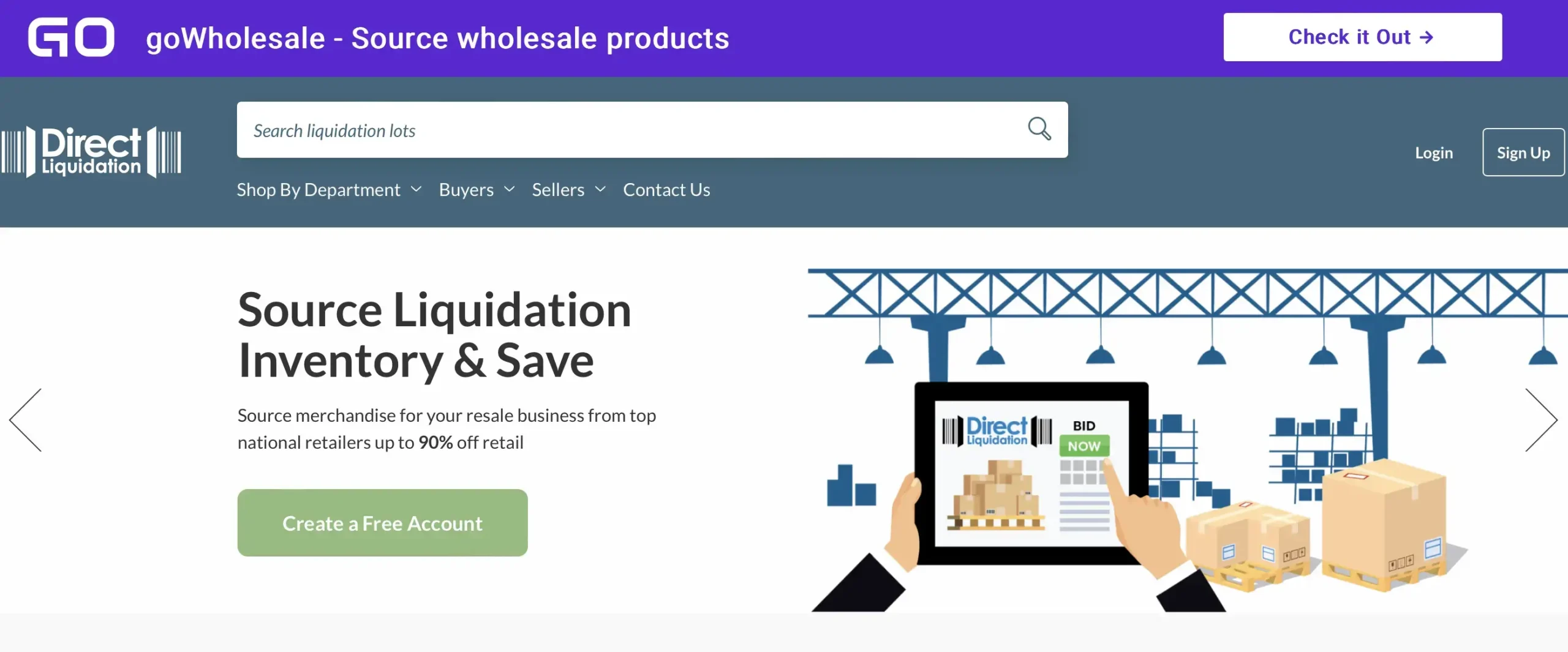
This service stands out as a top choice for resellers since it provides quick and transparent access to overstocked and returned items from vendors such as Amazon. These customers should be aware, however, that there may be limits when purchasing modest quantities, in addition to expensive shipping expenses and inaccurately labeled pallet contents.
Pros:
Cons:
Liquidation
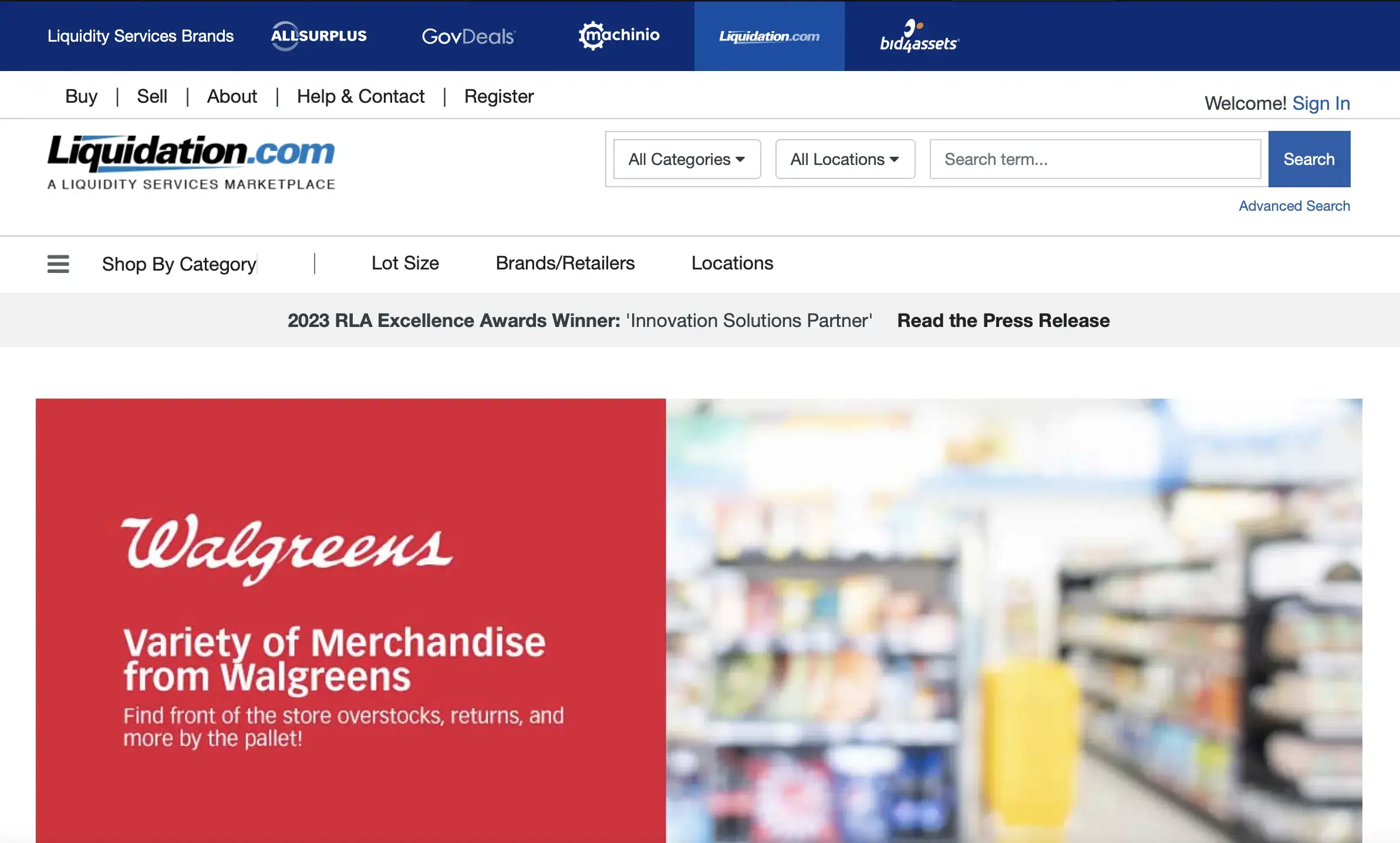
With a focus on wholesale and industrial liquidations, this website can still be useful for finding Amazon return pallets. However, purchasers will have to go through a fairly difficult auction process to acquire amazing deals on the inventory treasures they’re looking for.
Pros:
This Amazon liquidation business offers fantastic rates on return pallets, so you can often acquire products for less than the original price. You might find valuable and resellable objects on the pallets, allowing you to make a good profit.
Cons:
Depending on the goods or seller, you may or may not receive warranty coverage or a guarantee on the quality or functionality of the things purchased.
Because Liquidation.com attracts a large number of customers, you will face stiff competition when purchasing an item, and the price will rise in the auction.
B-Stock Solutions
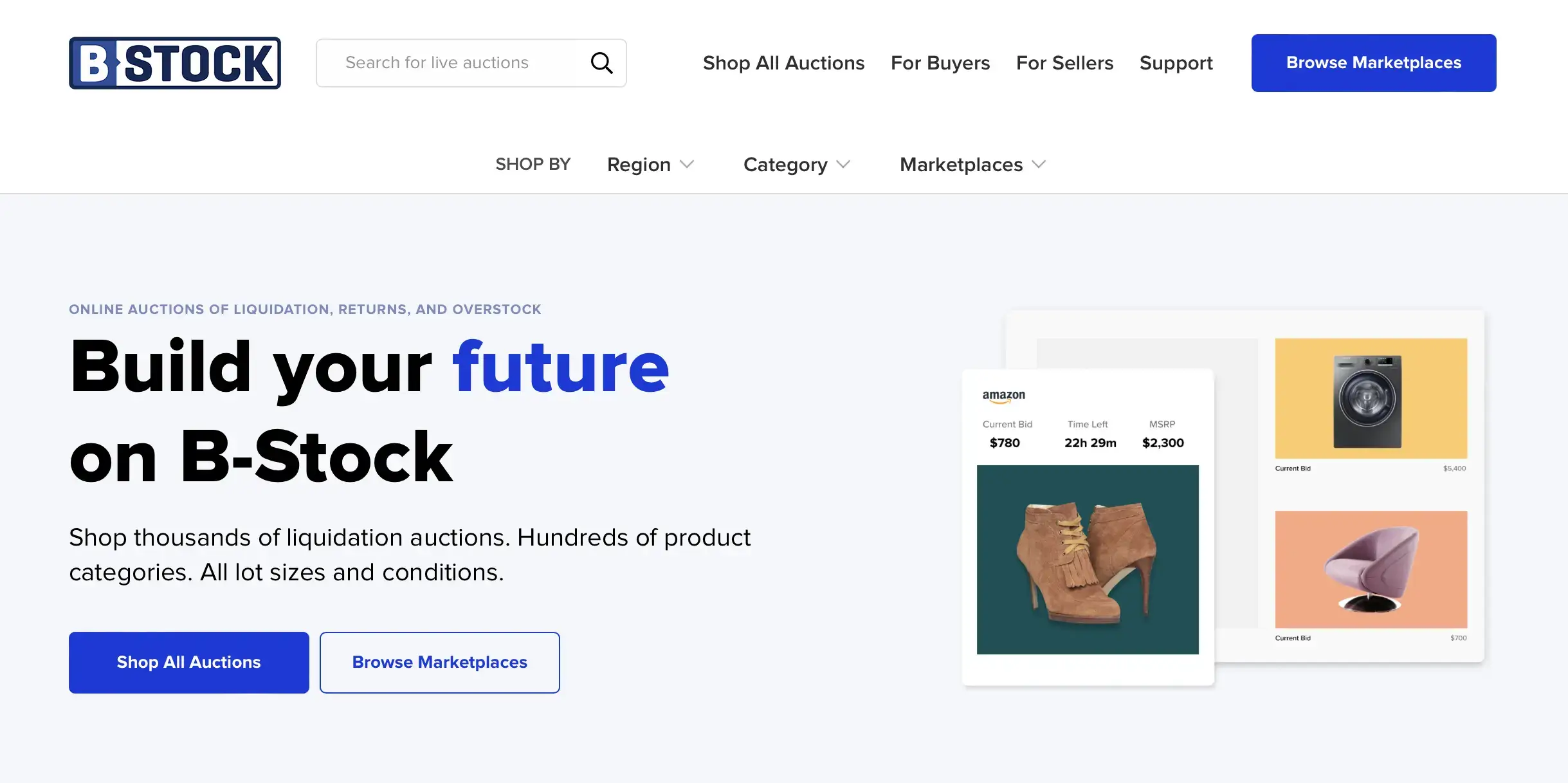
This shop, which is directly owned and maintained by Amazon, provides excellent rates on Amazon return pallets to approved business clients and resellers. This exclusivity enables you to have early access to inventory offers before other major liquidators swoop in. Keep in mind, however, that early access results in more expensive pallets and reselling regulations that purchasers may find excessively limiting.
Pros:
- Access to a Wide Range of Inventory: B-Stock Solutions offers a diverse array of products from various retailers and manufacturers, providing buyers with a broad selection of inventory to choose from.
- Cost Savings: Buyers can often purchase inventory at a fraction of the retail price, leading to significant cost savings and potentially higher profit margins when reselling the products.
- Transparent Bidding Process: The auction-based platform allows buyers to bid on inventory lots, providing transparency in pricing and the opportunity to determine their purchase price.
- Variety of Product Conditions: B-Stock Solutions offers inventory in various conditions, from new and like-new to returned and refurbished, catering to different buyer needs and market niches.
- Reduced Environmental Impact: By purchasing and reselling excess inventory, buyers help reduce waste and contribute to a more sustainable retail ecosystem.
Cons:
- Risk of Unknown Quality: While B-Stock provides condition descriptions, the actual quality and condition of the inventory can vary, posing a risk to buyers who may receive items that are damaged or unsellable.
- Logistical Challenges: Buyers are responsible for arranging shipping and handling of the purchased inventory, which can be logistically complex and costly, especially for larger lots.
- Competition: Popular auctions can be highly competitive, driving up prices and reducing potential profit margins for buyers.
- No Returns: Most sales on B-Stock Solutions are final, meaning buyers have limited recourse if the inventory does not meet their expectations or is not as described.
- Market Saturation: As more buyers enter the liquidation market, there is a risk of market saturation, making it harder to resell purchased inventory at a profit.
Liquidity Services
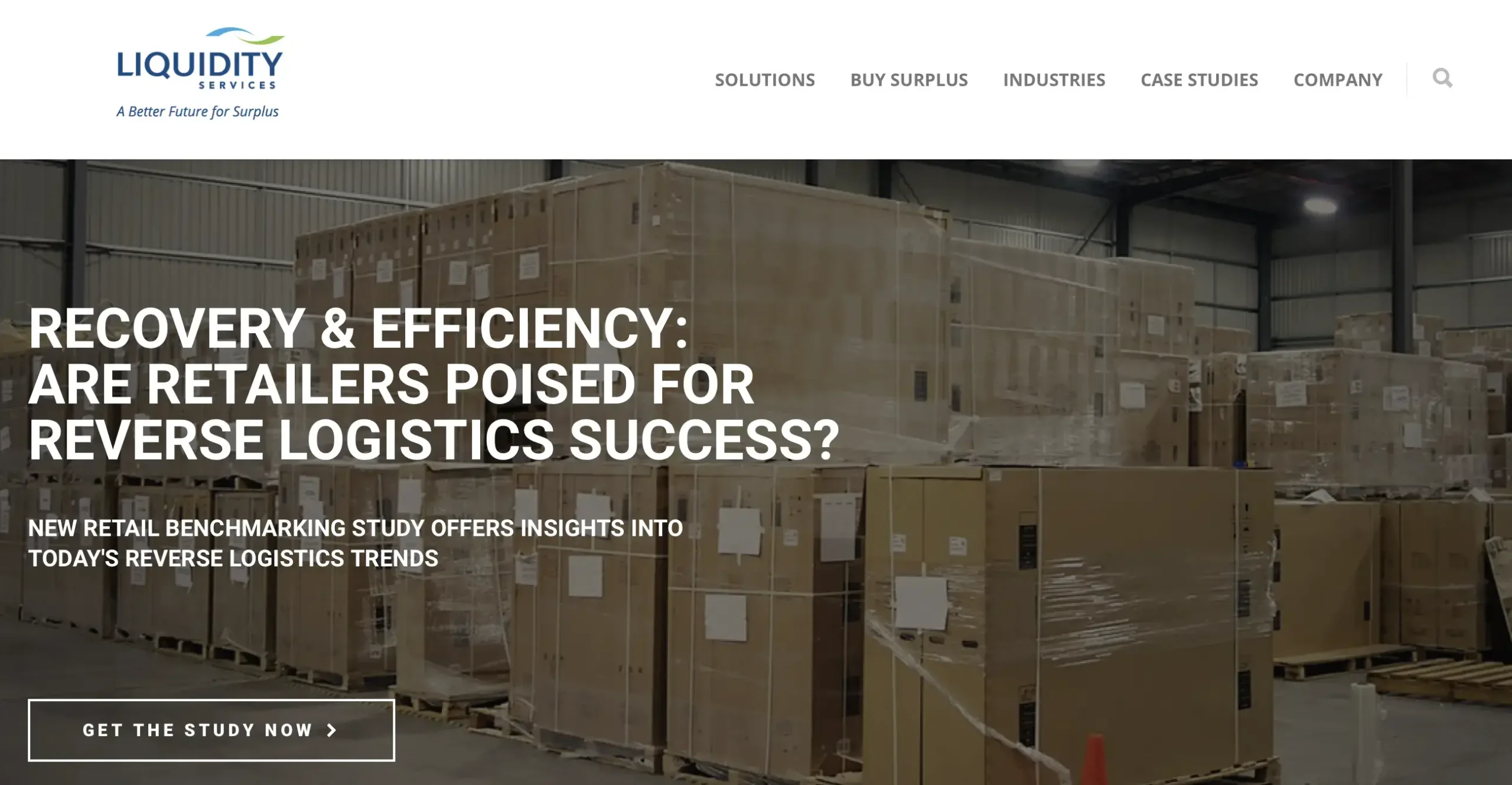
With onsite Amazon return pallet checks and major bidding events performed at their Ohio warehouse throughout the month, this supplier may be suitable for first-time pallet resellers.
They will be able to inspect each pallet in person rather than online and decide whether it is worth purchasing. However, some resellers may find it prohibitively expensive to fly to Ohio to attend these events.
- Enhanced Market Efficiency: Liquidity services increase the ease with which assets can be bought or sold, leading to more efficient pricing and market operations.
- Increased Investment Opportunities: By providing a platform for the exchange of assets, liquidity services open up a broader range of investment opportunities for individuals and institutions.
- Improved Market Stability: High liquidity in a market helps to reduce volatility, as it’s easier to find buyers and sellers, which in turn can lead to more stable prices.
- Easier Access to Capital: For businesses, liquidity services can facilitate easier access to capital by enabling the quick sale of assets or securities.
- Better Price Discovery: With more buyers and sellers participating in the market, liquidity services can lead to better price discovery, ensuring assets are more accurately priced according to supply and demand.
Cons:
- Market Manipulation Risks: In highly liquid markets, there may be a risk of market manipulation, where large traders or institutions could influence prices to their advantage.
- Asset Depreciation: In some cases, such as the liquidation of returned goods, the value of assets sold through liquidity services may be significantly lower than their original price.
- Operational Risks: The platforms or services facilitating liquidity may face operational risks, including technical failures, security breaches, or regulatory challenges.
- Reduced Control for Sellers: Sellers using liquidity services might have less control over the final selling price of their assets, especially in auction-based or competitive bidding environments.
- Dependency on Market Conditions: The effectiveness of liquidity services can be highly dependent on overall market conditions. In times of financial crisis or market downturn, liquidity can dry up, making it difficult to buy or sell assets.
How to Buy the Right Kinds of Amazon Return Pallets
Resellers will be able to purchase one or more Amazon return pallets and begin making a consistent profit with careful planning, intuition, and a little luck. Check out the recommendations below to find fantastic methods to buy these pallets.
Join B2B Liquidation Marketplaces
Buyers may take advantage of B2B liquidation markets by comparing buy histories and feedback ratings, verifying each marketplace’s particular policies, and then bookmarking a list of their favorite platforms so they are well-prepared when auctions begin.
Compare Products on Different Marketplaces
Compare products across many marketplaces by cross-referencing Amazon return pallet contents, size criteria, category themes, price per item, and other shipping details. Then, closely follow specialty liquidators for the most up-to-date information on trending products, while continually looking for better offers.
Find a Reputable Seller
Before acquiring an Amazon return pallet, make sure to carefully evaluate each seller. You can confirm their industry experience on other professional company information pages. You can also check with the Better Business Bureau for additional information about your chosen seller.
Consider Your Shipping Costs
When calculating shipping expenses, it’s important to consider freight fees rather than pallet prices. One of the finest ways to accomplish this is to carefully examine the shipping cost tables for each marketplace to get a reasonable estimate of the freight rate for your area.
Buy Amazon Return Pallets on B-Stock
When you buy Amazon returns pallets from B-Stock, you can get advantages like early access to pallets, lower logistics costs, and, most significantly, the ability to build relationships with B-Stock management.
Choose Manifested Over Mystery Pallets
With manifested pallets, you may see a detailed list of contained items, procurement values, and condition assessments for each pallet. You may also simply verify specific quantities, brands, product categories, model numbers, and much more to determine whether the Amazon returns pallet is perfect for you.
Pro Tips on Selling Amazon Return Pallets Pallets
Thoroughly Inspect Returns
To ensure that you’re only offering high-quality products that will generate positive feedback, you must separate the wheat from the chaff.
Carefully evaluate each item to detect any flaws that customers may notice, and if they are too faulty to resell as new, you may need to resell as used or sell through an alternative channel (such as Facebook Marketplace).
Repackage Items with a Professional Touch
When repackaging products, you might want to design your packaging in a range of sizes to facilitate the product’s easy removal from the old package and placement in new containers.
If you sell an item in a beat-up box or with ripped Styrofoam that has not been properly wrapped, it may degrade the client experience and encourage them to provide poor feedback.
You may quickly boost the resale value of things received on the Amazon returns pallet by refurbishing, disinfecting, and repackaging them to the point where they appear brand new or barely used.
When reselling electronics, you should consider adding value to the device by including chargers, cords, accessories, and other products that improve the client experience.
We also urge that you be incredibly organized throughout this process; if you don’t meticulously catalog and repackage each item you receive, your warehouse or storage space may cause you more stress than you realize.
Aggressively Price
When you resell Amazon return pallets, you have a significant price advantage because of the large savings you receive when purchasing them. You should use this to your advantage and outprice your competition on Amazon.
Prioritize getting the greatest pricing while keeping a 15–30% (minimum) profit margin at all times. Remember that your goal is to transfer this product as rapidly as possible in order to avoid incurring excessive warehousing fees.
Leverage Facebook Marketplace, Craigslist, or eBay
After receiving your Amazon return pallet and conducting detailed analysis, you will most likely discover that a few of the products will not be lucrative to resell through FBA or FBM (i.e., too competitive, too expensive to pay for warehousing and shipping, etc.).
In this instance, you must still earn in some way, and alternative marketplaces such as Facebook, Craigslist, or eBay are likely to be your best options.
These platforms are ideal for one-of-a-kind products with limited production quantities. Keep in mind that potential clients on Facebook and Craigslist are eager to negotiate.
You may either charge high to compensate for this or sell reasonably (with a 15–30% profit margin) and specifically state in the product description that you are pricing fairly and are not open to negotiation.
Choose Amazon manifested pallets over Amazon mystery boxes
Amazon Return Pallets Conclusion
Effectively selling Amazon return pallets can be a terrific way to make a lot of money, especially for inexperienced e-commerce sellers. However, practical problems and attempting to eliminate any hazards might be difficult for many.
That is why you must utilize the suggestions in this article to give yourself the best chance of building a profitable resale empire.
Frequently Asked Questions
Does Amazon have a liquidation site?
Yes, the Amazon Bulk Liquidation Store sells various products from third-party vendors in the form of lots. These lots include overstocked items that are unopened and new, as well as things that customers have returned to Amazon that are defective or missing parts.
Is it worth it to buy Amazon return pallets?
You might potentially earn a significant markup on things. If you can find branded things in good condition and sell them at full retail rates, you can make a lot of money. It’s not easy, and every pallet you buy is a chance, but there is a reward if you’re ready to put in the effort.
How can I buy Amazon return pallets?
Amazon offers a liquidation program in which sellers can liquidate customer-returned products in an auction to make room for new inventory in the warehouse. You can purchase Amazon Return Pallets directly through this program or from third-party liquidators.
Are Amazon return pallets a real thing?
Amazon Return Pallets are massive pallets filled with returned merchandise, which Amazon resells at drastically discounted costs. E-commerce continues to grow as more consumers shop online.
What Is the Return Policy for Amazon Warehouse Deals?
Amazon’s 30-day return policy specifies that buyers can return any Warehouse Deal for a full refund for any reason. This policy applies to both the Amazon Warehouse and anything purchased straight from the main site.
What Are Amazon Return Stores Called?
Amazon liquidation stores, often known as Amazon Bin Stores, are facilities where businesses can acquire overstocked or returned merchandise from Amazon on pallets. These enormous firms purchase bulk supplies, which are then resold to people.
Do I Need a Business With a Tax ID to Buy Amazon Return Pallets?
It depends. When acquiring Amazon return pallets, most liquidation shops do not require a business tax ID. However, some sites, such as Amazon Liquidation Options, will demand this, so you may want to get one.
Why Are Amazon Return Pallets Popular Among Resellers?
They provide a low-cost alternative to purchase a big quantity of items, which can subsequently be resold for a profit. The variety of products in these pallets may appeal to a broad spectrum of buyers.
How Can I Purchase Amazon Return Pallets?
Amazon return pallets can be obtained via liquidation companies or online marketplaces that offer returned and overstock products.
What Should I Consider Before Buying an Amazon Return Pallet?
Consider the pallet’s product mix, prospective demand, your ability to inspect, repair, or refurbish goods, and the whole cost, including shipping and handling.
Are All Items in Amazon Return Pallets in Good Condition?
The condition of things can vary. Some may be nearly new, while others may be damaged or in need of repair. It is critical to comprehend the danger of obtaining non-sellable items.
Is It Profitable to Resell Items from Amazon Return Pallets?
It can be successful if costs are carefully managed and things are resold at a high margin. However, success is contingent on your ability to restore, promote, and sell these products.
How Do I Handle Damaged Items in an Amazon Return Pallet?
Damaged things can occasionally be repaired or restored. Alternatively, they can be used as parts or sold at a bargain.
How Can I Choose the Products in My Amazon Return Pallet?
Typically, you cannot choose specific products. Pallets are pre-packed with a variety of returned items.
What Are the Risks of Buying Amazon Return Pallets?
Risks include obtaining damaged or unsellable things, underestimating repair or refurbishing expenses, and misestimating market demand for the items.
How Do I Maximize Profits from Reselling Amazon Return Pallets?
Maximize profits by thoroughly evaluating and appropriately valuing each item, repairing/refurbishing where possible, and focusing on the right resale market.
